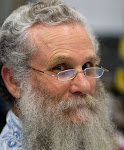In the winter of 1993 - July or August, I think - in a 'usenet' Christian group on the infant World Wide Web someone mentioned a Reformed pastor who had become a Roman Catholic. I was electrified. I had been mooning about inwardly about the Catholic Church for a year or more before that. There were a couple of self-avowed Catholics on the list who astonished me. I had not even known that I had silly preconceptions about Catholics until I found myself amazed that these persons seemed far and away the most interesting, straightforward, intelligent, and 'normal' people I had encountered.
I was electrified, but I was terrified. For all that part of my mind knew perfectly well that these prejudices were ridiculous - and, indeed, that two writers whom I admired enormously - Tolkien and Chesterton - were Catholics - still I feared the Catholic Church more, even, than the Devil. Christ had overcome Satan; but there was nothing in Scripture about Christ having overcome the Roman Catholic Church.
I was afraid of reading anything by a Catholic, and afraid of letting anyone know of my interest. I did find out that the 'Reformed pastor' was someone named Scott Hahn, but the University of Auckland library had no book by him, and though I did eventually listen to audio recordings of talks he made, which played an important part in my becoming a Catholic, I had at the time no opportunity of getting anything by him.
But Newman I knew of. Newman was, after all, the well-respected author of "The Idea of a University" - concerning which the Wikipedia article on Academia says:
A substantial part of what we now know as a "university" came from the philosophy and work of one man, John Henry Newman, who wrote a book called The Idea of a University.
So reading Newman was respectable. To be sure, I had inherited, from something that Francis Schaeffer had said on an audio tape, the idea that Newman's conversion to the Catholic Church had been more an act of intellectual and moral cowardice than a matter of conviction. I doubt Schaeffer intended any such thing, but that was the idea I had.
And from Schaeffer I knew that Newman had written the book "Apologia pro Vita Sua" - and the University library certainly had that.
I was stunned by what I read. Whatever the source of my prejudice, it was shown to be nonsense. And Newman had written, after six years' trying to decide about the Catholic Church, "Essay on the Development of Christian Doctrine". This book, also, I read.
This was the beginning of a 27-month process which brought me, and, as it happened, though the choice was their own, my family into the Catholic Church.
That event took place on 24 December, 1995. Over the next several years I read little of Newman. I was busy reading everything I could get my hands on about my new faith, and about living it - particularly trying to make essential changes in my character.
But around about 2000 I began seriously to read Newman again. I read several biographies of Newman. I read all his books that our library has - except the 32-volume (each close to 1,000 pages) collection of his letters and diaries. I began to feel I knew this man - and became more and more drawn to him as a person.
By about 2001 I had learned about the 'cause' for his canonisation and began to pray for its success. I began reading the volumes of letters. I have found it the most amazing experience. I am currently in Volume X, and have got to 15 January, 1845. On 6 October, 1845 Newman surrendered. The Hound of Heaven had run Newman to ground.
Newman was declared venerable in 1991. This is the first step towards canonisation. It means the Church has examined his life and finds him 'heroic in virtue,' worthy of imitation. The next step is beatification - the Church's declaration that the 'Servant of God' is in Heaven. This step requires one verified miracle - almost always a miracle of healing - that is without doubt to be ascribed to the intercession of the candidate. By 'miracle' the Church means that the event cannot be explained by any natural means. The requirements both for the miraculous nature of a proposed event, and for its ascription to the intercession of the proposed beatus, are quite stringent.
Given my devotion to Newman, therefore, my prayer for his cause, and my deep interest in his writings, I need hardly describe the emotion I felt about a year ago when it was reported that a cure was attributed to Newman's intervention. For a year or so I have continued to pray - as have many many others. And now this:
I am so happy.
